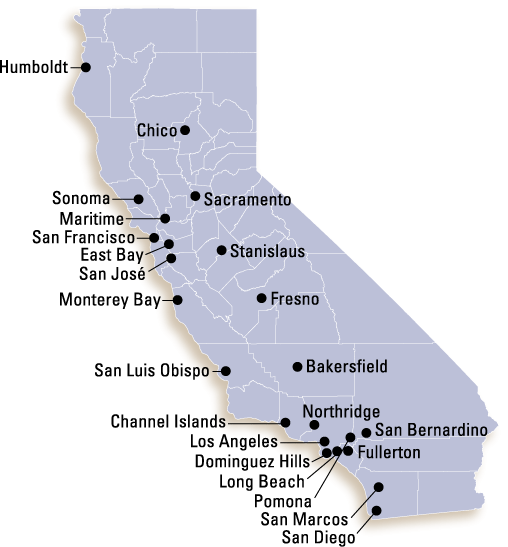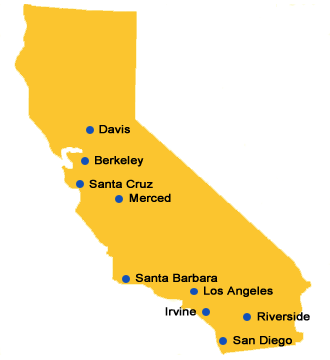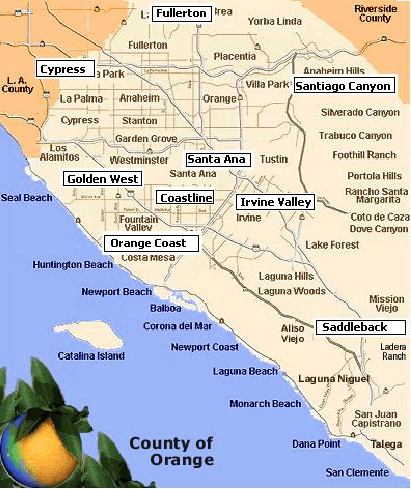College Application fee Waiver Directory of Colleges
College Application fee Waiver Directory of Colleges
Exploring Colleges
Selecting a college can be one of the most important and fun experiences of a student’s high school career. Becoming educated on college options takes time. Don’t wait until the fall of your senior year to decide where you will apply; it’s a stressful enough time as it is. Generate a potentially broad list of 15 to 20 schools which you will then research in depth. Explore their websites! Attend a College Visit at Uni! Talk to college alumni! Talk to your parents! Talk to your counselor! Visit the campuses!
At the end of your college search, you should come up with a list of 8-10 colleges to which you will apply. In addition to your first choice “dream” school(s) which may be a reach for you, be sure to include a few “target” schools where you stand a greater chance of acceptance, and at least one “safety” school where you know you would likely be admitted and you would enjoy attending. Remember, Community College transfer programs are always an option too.
How do you find the right college for you?
Selecting the college that is right for you can be an overwhelming task unless you study the differences between colleges and establish your personal priorities in regards to your college experience. Factors which are usually considered in selecting a college include the following:
Size – Size of colleges range from very small (500 students) to very large (>35,000 students)
Location – Some students prefer to attend college close to home while others want to experience a new environment and would be able to adjust and function as well or better farther away.
Type – Colleges are either privately or publicly funded. Private colleges may or may not be religiously affiliated which may add certain expectations for students who attend that college.
Cost – This includes tuition, fees, room and board, and travel expenses. Tuition at state-supported schools is substantially lower than that of private schools. Students who wish to attend out-of-state public schools pay out-of-state tuition fees, which in most cases equate with tuition at a private institution. However, private institutions often provide significantly more financial aid.
Admission Requirements – In addition to presenting acceptable scores on entrance exams, some colleges require a certain number of units in high school preparatory courses, as well as essays, recommendations, or interviews.
Curriculum and Degrees Offered – A sizable consideration for choosing a college should be the availability of adequate programs in the area you intend to study, as well as the requirements for achieving a degree in your major at that particular college.
Honors – Distinctive academic programs may be available to students who meet requirements.
Facilities – Some students are interested in the quality of the facilities, including classrooms, laboratories, libraries, residence halls, etc.
Financial Aid – Along with federal and state aid, many colleges offer institutional aid to bridge the gap. Some private colleges even offer financial aid that places the cost in line with that of public colleges.
Extra-Curricular Activities – The college should offer a variety of activities which are of interest to you, e.g., student government, social organizations, athletic or intramural activities, etc.
Family Tradition – Your family may have strong ties to a particular college.
Additional Information
College Priorities Checklist
California Higher Education Opportunities
Comparing Colleges
Don't Want to go to College?
Four-Year Colleges
California State University
The CSU, with 23 campuses is a leader in supplying graduates with the necessary technical and personal skills to be successful in the working world. Visit https://www2.calstate.edu/apply for admissions requirements, deadlines, and the application.
The minimum requirements for admission as a freshman are:
- Completing specific high school A-G approved courses, with a "C" or better
- Meeting minimum eligibility determined by an index that combines GPA with test scores (ACT or SAT, excluding writing). *Note: Meeting the minimum eligibility requirement does not guarantee admission. Some programs/campuses may establish a higher index which is not published prior to applying.
Resources
CSU Application Deadline: Nov 30th
A-G Course Requirements
CSU System Website
CSU Application
CSU Eligibility Index and GPA Calculator
Student Support
Transfer Paths to the CSU
University of California
The UC system is among the world's greatest research universities with 10 campuses across California. Visit www.universityofcalifornia.edu for admissions requirements, deadlines, and the application.
Students must have a GPA of 3.0 or above in all UC approved coursework. You can easily calculate your eligibility for UC by using the interactive eligibility calculator available online at admission.universityofcalifornia.edu/freshman. Most UC campuses receive more applicants than they have room for, so they use a comprehensive review process to determine admission.
*Note: Although SAT Subject Tests are no longer required for admission, scores can still be submitted, and are sometimes recommended by certain campuses or programs.
Resources
UC Application Deadline: Nov 30th
A-G Course Requirements
UC Admissions Website
UC Application
UC Admissions Index and GPA Calculations
Search A-G Courses
Transfer Path to the UC
Private Colleges & Universities
There are hundreds of private colleges and universities from which to choose. There are 63 independent undergraduate colleges and universities in California alone. Private colleges and universities are quite diverse in nature, including research universities, small liberal arts colleges, faith-based colleges and universities, and specialized colleges.
The cost is higher than public colleges and universities. However, these institutions have a variety of financial aid programs that often make the cost comparable to a public institution. Your ability to graduate in 4 years at a private institution may be greater than at a public institution due to more courses being available to you as a student there.
Some independent institutions, such as USC, Stanford, and California Institute of Technology, are highly selective. Other universities are less selective in nature. Visit their websites for specific admission information. Transfer to a private college is possible after your freshman year at a community college or other institution.
Many schools take applications through the Common App.
*There are also numerous out-of-state public colleges and universities that are great options as well.
Resources
Application Deadlines Vary
Independent CA Colleges & Universities
The Common App
Coalition Application
Community Colleges
The California Community College System is the largest system of higher education in the world with 110 campuses. Community colleges offer a smooth transition to a four-year institution. For many students, the community college offers a quality lower-division academic or vocational college education at value prices.
Programs include:
- Associate degree programs in arts and sciences
- Certificate programs in arts, sciences, technical, and occupational fields
- Credit and non-credit classes
- English training
- Citizenship classes
- Remedial or "catch-up" classes
- Community education classes
For more information on the California Community Colleges, visit www.cccco.edu or see the college sites below:
- Coastline Community College
- California Community Colleges
- Golden West College
- Irvine Valley College
- Orange Coast College
- Saddleback College
- Santa Barbara City College
When to apply:
Irvine Valley College:
Freshman Advantage for incoming students. Click here for more info. Students who complete all the matriculation steps by April 12th will register before current IVC students.
e encourage all seniors who think they might attend IVC to complete this process!
Orange Coast College:
OCC also has a priority registration process. Click here for more info. Students who complete all of the matriculation steps will register before other incoming OCC students:
- Apply online
- Apply for financial aid at www.fafsa.gov by March 2nd
- Complete the online orientation
- Complete the Math and English assessments
- Attend a Student Education Plan workshop
- (optional) Take a counseling course in the Spring
TRANSFERRING TO A FOUR-YEAR INSTITUTION:
It is extremely important for students who are considering transferring to work closely with their community college counselors at the time of admission to discuss this goal. If you know the specific campus or major you want to target, you will be more successful in transferring courses. Students should balance their course load by taking both general education courses and lower division courses in their proposed major. In addition, many community colleges offer transfer guarantee programs for specific universities.
Refer to the college catalog of the institution you wish to transfer to and check transfer requirements. Visit the web-based ASSISTstudent transfer information system for more information about the transfer process.
Admissions officers look at several factors, including:
- Completed transferrable coursework.
- A college GPA of 2.0 (for CSU) or 2.4 (for UC). Some impacted majors and campuses may require a higher GPA.
- Whether or not you are in "good standing" at your last college.
- Some campuses also require you to complete certain English and math courses with a grade of ”C” or higher.
Resources
AA-T and AS-T Degrees
Transfer with TAG
TAG Matrix
Transfer Admission Program (TAP)
IVC Honors Program
DISCOVER DIFFERENT DEGREES
ONLINE DEGREE INFORMATION - CLICK HERE
READINESS CHECKLISTS
Gap Year
Should I take a GAP Year? CLICK HERE to explore further.


